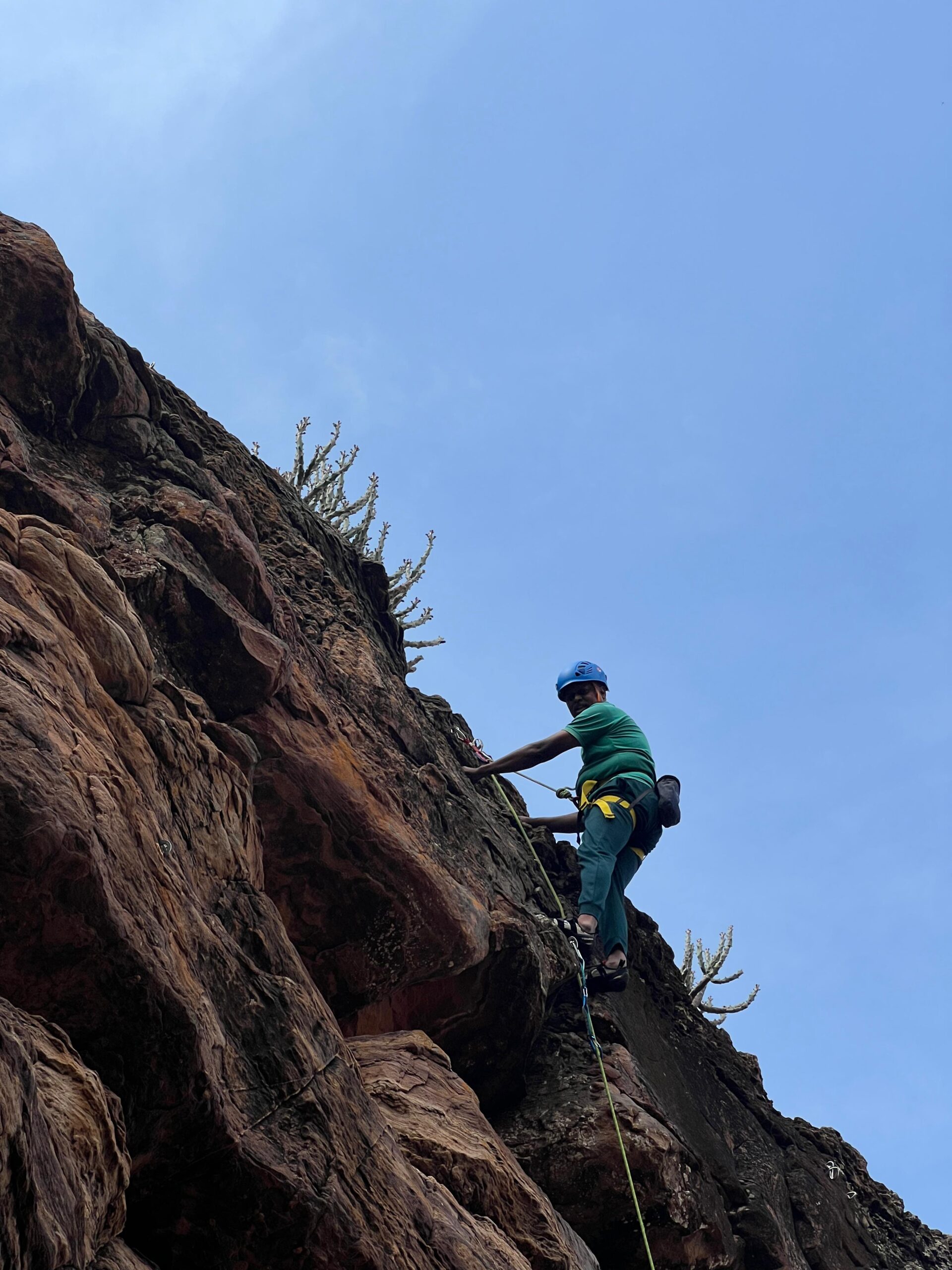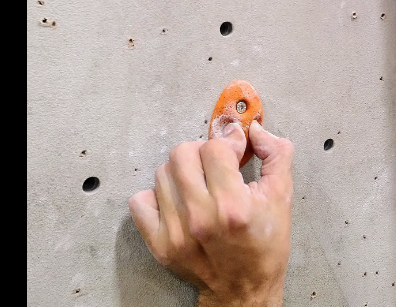Rock climbing can be accessible for beginners, and you can learn through a variety of methods:
- Take a courseA beginner’s climbing course at a gym can teach you essential skills like how to use equipment, climbing techniques, and safety procedures.
- Learn on your ownThere are many educational resources available online, in books, and on social media.
- Try a climbing gymMany modern climbing gyms offer options for first-time climbers that don’t require a partner, such as bouldering or auto-belays.
Here are some tips for beginners:
- Focus on technique: Technique is more important than strength when you’re starting out. Pay attention to your form, balance, and footwork.
- Train your strength: You can try exercises like typewriter pull-ups, fingerboard and hangboard training, and core strength exercises.
- Don’t go too fast: Don’t try to do too much too quickly.
Rock climbing requires a range of physical demands, including strength and endurance in your upper and lower limbs, hands, feet, waist, abdomen, hips, and trunk.
Rock climbing can be challenging for beginners, but it’s also highly rewarding and accessible with the right approach. The difficulty depends on factors like your fitness level, the type of climbing you try, and your mindset. Here’s what to consider:

1. Physical Fitness inRock climbing
- Upper Body Strength: Many think climbing is all about arm strength, but it’s more about using your legs and core efficiently. Beginners often overuse their arms, which can make it feel harder.
- Endurance: Even if you’re not very strong starting out, climbing builds endurance and muscle quickly.
2. Types of Climbing
- Indoor Climbing: Gyms are beginner-friendly and have routes of varying difficulty.
- Top-Roping: A harness and rope keep you secure, making it ideal for beginners.
- Bouldering: Climbing shorter walls without ropes can feel more approachable but often requires more explosive moves.
3. Mental Challenges
- Fear of Heights: Many beginners experience hesitation, but trust in the safety systems helps build confidence.
- Problem-Solving: Climbing is as much about figuring out the route as it is about physical effort.
4. Learning Curve
- Technique Matters: Beginners often rely on brute strength, but proper footwork, balance, and body positioning make climbing easier over time.
- Progression: Climbing grades allow you to start easy and gradually tackle harder routes as you improve.
5. Rock climbing Tips for Beginners
- Take an introductory class at a climbing gym.
- Start with easy routes to build confidence and learn technique.
- Warm up and stretch before climbing to prevent injury.
- Climb with a partner or mentor who can guide you.
Overall, while it may feel challenging at first, climbing is highly adaptable, and beginners often see rapid progress with practice.
Improving in rock climbing involves a mix of physical training, skill development, and mental focus. Here’s a guide to help you progress:
1. Build Strength and Fitness
- Focus on Core Strength: A strong core improves balance and stability. Include planks, leg raises, and Russian twists in your workouts.
- Grip and Finger Strength: Use a hangboard, grip trainers, or climbing itself to develop hand and finger strength over time.
- Leg Strength: Exercises like squats, lunges, and calf raises will make pushing off footholds easier.
- General Fitness: Maintain cardiovascular fitness to support endurance during longer climbs.
2. Master Technique in Rock climbing
- Use Your Legs: Push with your legs rather than pulling with your arms. Keep your hips close to the wall for better balance.
- Improve Footwork: Practice precise placements by climbing routes that force you to use small footholds.
- Body Positioning: Learn to keep your center of gravity over your feet. Experiment with twisting your hips or turning sideways to reach holds efficiently.
- Practice Dynamic and Static Moves: Work on transitioning smoothly between fast, powerful movements and controlled, slow ones.
3. Climb Regularly
- Consistency is Key: Aim to climb 2–3 times a week to build strength, endurance, and familiarity with movement.
- Challenge Yourself Gradually: Climb routes slightly outside your comfort zone to push your limits without overexerting.
4. Learn Problem-Solving
- Route Reading: Before starting a climb, study the holds and visualize the sequence of moves.
- Watch and Learn: Observe experienced climbers to pick up tips on technique and strategy.
- Practice on Different Routes: Diversify your climbs to adapt to various holds, angles, and rock types.
5. Train Off the Wall
- Strength Training: Add pull-ups, deadlifts, and shoulder exercises to your routine.
- Mobility and Flexibility: Stretch regularly, focusing on hips, hamstrings, and shoulders for better reach and movement.
- Antagonist Muscle Work: Strengthen opposing muscles (like chest and triceps) to prevent imbalances.
6. Work on Mental Toughness
- Overcome Fear: Gradually expose yourself to heights in controlled environments to build confidence.
- Stay Focused: Practice mindfulness techniques to stay calm and present on the wall.
- Embrace Failure: Every fall is a chance to learn and improve.
7. Rest and Recovery
- Avoid Overtraining: Take rest days to allow your muscles to recover and grow.
- Eat Well: Fuel your body with nutritious food for energy and recovery.
- Listen to Your Body: Address pain or discomfort early to prevent injuries.
Is Rock Climbing Difficult to Start? The Answer May Surprise You
In short: no!
But if you’d asked me 30 years ago when I first started climbing, my answer would have been very different.
Climbing Was Once Hard to Begin
Decades ago, getting into rock climbing was no small feat. First, you needed access to an actual cliff—not exactly a common backyard feature. Then, you’d have to find a climbing partner, specifically someone experienced enough to belay for you (hold the rope) and teach you the ins and outs of safety systems. Without proper guidance, your adventures could turn risky very quickly.
On top of all that, there was the cost of gear—harnesses, ropes, shoes, and other essentials—all of which had to be purchased upfront. For many, these barriers made climbing a niche pursuit, far removed from the accessible sport it is today.
Climbing Is Now Mainstream
Fast forward to today, and climbing has shed its fringe reputation to become a popular, mainstream activity. Indoor climbing gyms are sprouting up in cities everywhere, making the sport more accessible than ever. Most of us are just a short drive away from scaling our first wall.
But what about the equipment, training, and partners? Aren’t those still hurdles for beginners?
Not at all!
Seek Guidance Climbing Gyms Make It Easy
- Take Classes: Professional coaching can provide personalized feedback.
- Climb with Others: Partners can offer tips, encouragement, and motivation.
Modern climbing gyms take care of nearly everything. Most offer First-Time Climber packages that simplify the process. Typically priced between $35 and $50, these packages include all the essential gear: climbing shoes, chalk (to keep your hands dry), and harnesses.
The gyms also handle all the critical safety equipment, such as ropes, padded flooring, and anchors. With these essentials covered, all you need to bring is enthusiasm.
No Partner? No Problem
Worried about not having a climbing partner? Fear not—gyms have you covered there, too. Many offer options like:
- Bouldering: No ropes or harnesses needed; climbers tackle shorter walls with padded mats for protection.
- Auto-Belays: A mechanical device holds the rope for you, letting you climb solo.
If you’d rather climb with a buddy, introductory classes teach the basics of climbing safety, often in under an hour. These classes are a great way to team up with a friend and dive into the sport together.
Many gyms even host community events or pairing services to connect you with other climbers, whether they’re beginners like you or seasoned pros eager to share their tips.
You Don’t Need to Be Super Strong
A common myth about climbing is that it demands immense upper body strength. Not true!
As a climbing coach with over 25 years of experience, I’ve seen people of all ages, shapes, and fitness levels succeed on their very first day. From three-year-olds to eighty-year-olds, nearly anyone can make it to the top of their first wall.
Hollywood may portray climbing as an extreme sport requiring superhuman strength—think movies like Free Solo or Point Break. But in reality, most climbing gyms offer beginner-friendly routes that are more like scaling a ladder than clinging to a cliff.
Climbing Is for Everyone
Like any sport, climbing can get more challenging as you progress. But when you’re starting out, the focus is on accessible, beginner-friendly climbs designed to build confidence and skills.
Think of it this way: you wouldn’t expect to dunk a basketball on your first day playing, or ski down a double-black diamond trail as a novice. The same applies to climbing.
Modern gyms cater to all skill levels, offering routes tailored to different ages, heights, and physical abilities. All you need is a willingness to try, and you’ll be scaling your first wall in no time.
Ready to Try?
If you’re curious about climbing, visit your local climbing gym. They’ll provide everything you need for a fun, safe, and successful first experience.
And who knows? Like me, you might fall in love with the sport—and never want to stop!


